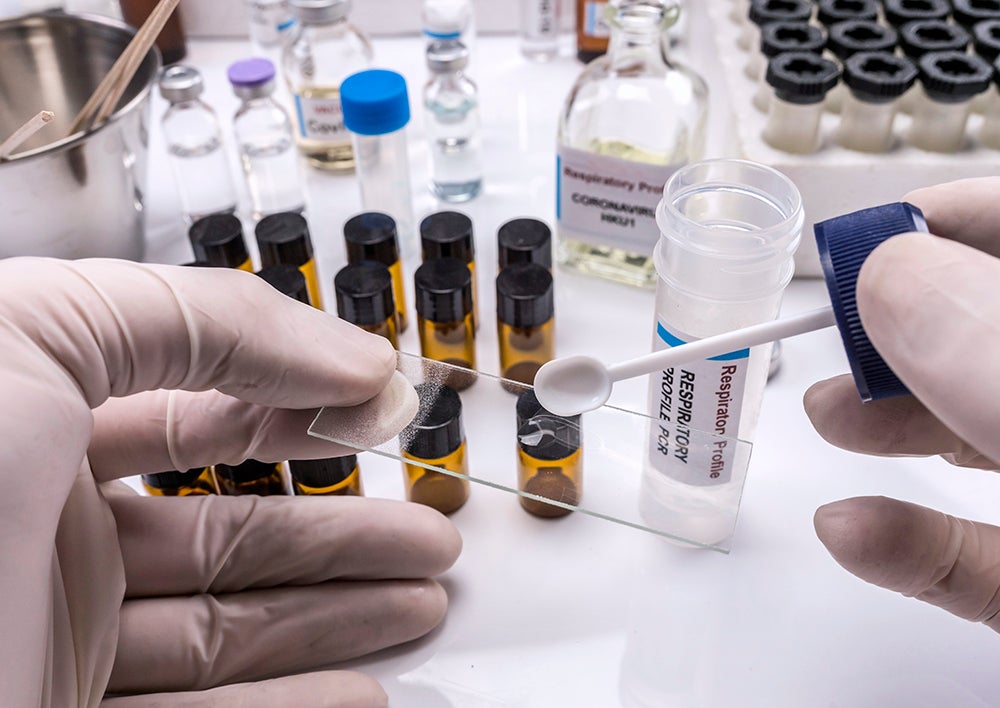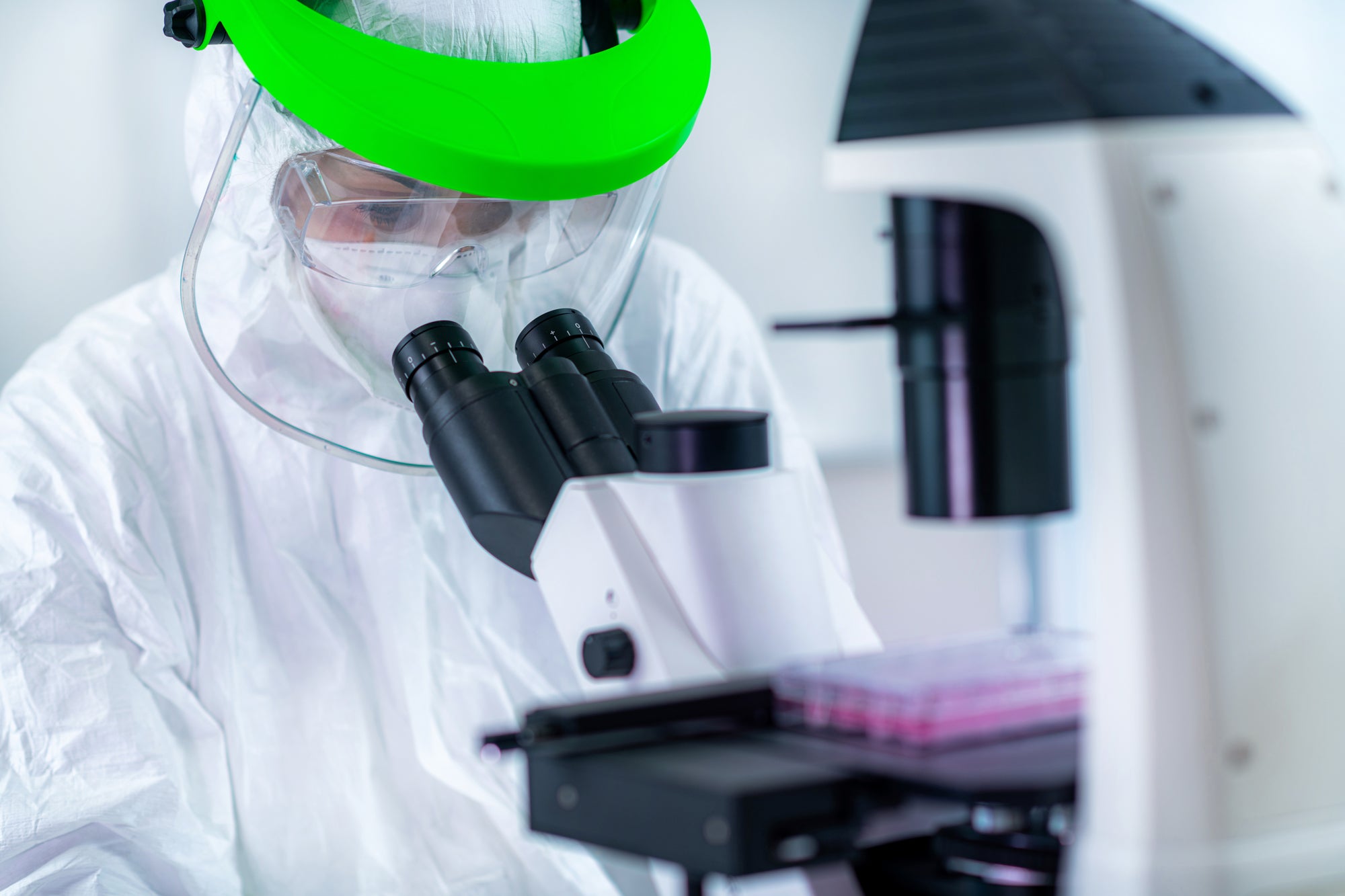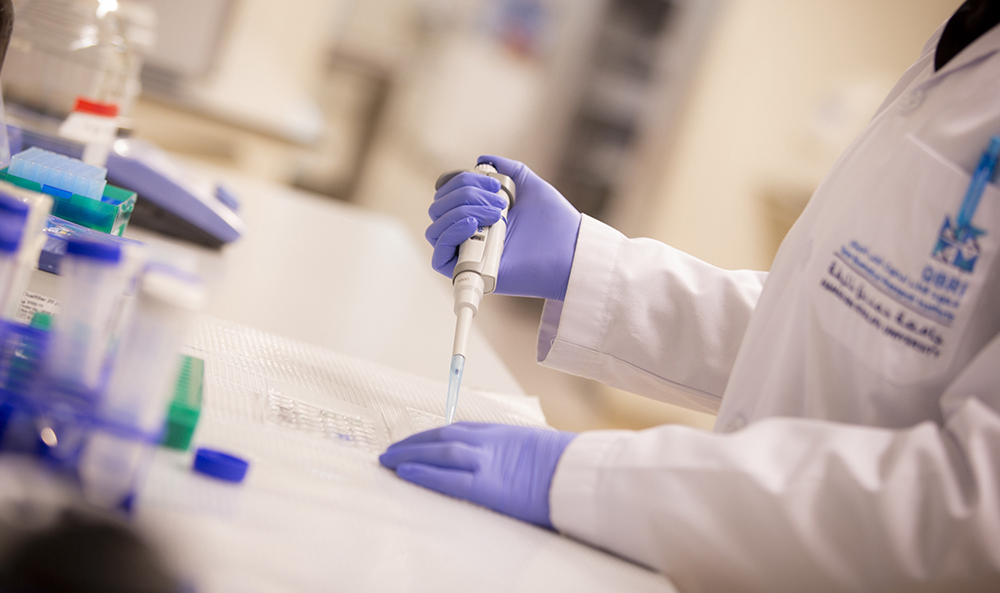الدكتور بول جي ثورنالي، والدكتورة جولي ديكوك، والدكتور نهاد العاجز، والدكتورة مريم المفتاح

برزت حالات الإصابة بمرض فيروس كورونا (كوفيد-19) على السطح خلال الأشهر الثلاثة الأولى من العام الحالي، وشكلت تحديًا كبيرًا لخدمات الصحة العامة والرعاية الصحية. وتعتبر التدابير التي اتخذتها وزارة الصحة العامة للحفاظ على سلامة الناس في قطر مثالية وحظيت بالإشادة والثناء من منظمة الصحة العالمية. ونذكر أدناه سبب الحاجة إلى توفير رعاية إضافية للمرضى الذين يعانون من مشاكل صحية موجودة مسبقا، مثل مرض السكري والسرطان.
ما نعرفه عن مرض كوفيد-19
By Dr. Paul J Thornalley, Dr. Julie Decock, Dr. Nehad Alajez, and Dr. Mariam Al-Muftah

COVID-19 viral infections surfaced in the first three months of this year and have produced a major challenge for public health and healthcare services. Measures taken by the Ministry of Public Health (MoPH) to keep people safe in Qatar are exemplary and have been praised by the World Health Organization (WHO). Below we describe why extra care is required for patients with existing health problems – diabetes and cancer.
What We Know About COVID-19 Disease

لا تستطيع الفيروسات، بما في ذلك فيروس كورونا (كوفيد-19)، وسلالة الفيروسات التاجية عمومًا، أن تنمو وتتعايش من تلقاء نفسها، وتعتمد في تكاثرها على انتقال العدوى إلى الخلايا المضيفة في جسم الإنسان أو الحيوان. لقد ساعدتنا البحوث التي تُجرى في علم الأحياء الجزيئي على استكشاف "المعلومات الداخلية" حول كوفيد-19 وآلياتها المُسببة للأمراض. في حلقة هذا الأسبوع، يشرح خبراء معهد قطر لبحوث الطب الحيوي ما يحدث بمجرد أن يجد الفيروس طريقة ما لدخول جسم الإنسان، وكيف يمكن تطبيق هذا الفهم في تحديد مواصفات التدخلات العلاجية اللازمة.

Viruses, including SARS-CoV-2, the virus strain that causes the coronavirus (COVID-19), cannot thrive on their own and rely on infecting host cells in humans or animals to reproduce. Research in molecular biology has allowed us to explore the ‘inside information’ on SARS-CoV-2 and its pathogenic mechanisms. This week QBRI experts explain what happens once the virus finds a way to enter the human body and how this understanding is being implemented to design treatment interventions.
لا شك أن تدابير التباعد الاجتماعي والحجر الصحي يواكبها شعور بالقلق لدى الكثير منا، فضلاً عن تساؤلات حول أسباب تطبيق مثل هذه الإجراءات الصارمة. وبطبيعة الحال، فإن السؤال الذي يدور ببال كل منا هو: متى ينتهي هذا الوضع الحرج؟

يتمتع الإنسان بوجه عام بخط دفاعي طبيعي ومعقد، إنه جهاز المناعة، الذي يستجيب للعدوى الفيروسية. ففي معظم حالات النجاة من فيروس كورونا (كوفيد-19)، كان جهاز المناعة هو الفائز في هذه المعركة الشرسة، وكان قادرًا على التخلص من العدوى الفيروسية، وبات المريض الذي شفي منه محصنًا ضد العدوى بالفيروس في المستقبل.
Social distancing and quarantine are causing many of us to feel anxious and wonder why such tough measures have been put in place. Naturally, the question everyone is asking is: when will this end?

Humans possess a complex natural defense army, the immune system, which responds to viral infections. In most survivors, the immune system wins the fight, clears the infection, and the recovered patient is now immune to future infections.
لا تُعتبر الفيروسات التاجية جديدة على الإنسان، فقد اُكتشفت هذه الفيروسات التاجية التي تصيب الإنسان لأول مرة في الستينيات من القرن العشرين. إذن، ما الذي يُميز فيروس سارس-كوفيد-2 أو كما يُسمى فيروس كورونا (كوفيد-19)؟ ففي ظل التغطية الإعلامية الهائلة، وهذا الكم الضخم من المعلومات المتاحة حول هذا الموضوع، لا يسع المرء إلا أن يغرق في خضم هذا البحر الواسع من التفاصيل. ففي إطار معالجة هذه القضية، استهل باحثو معهد قطر لبحوث الطب الحيوي عملية تستهدف تحديد المعلومات الخاطئة، وتزويد المجتمع بمعلومات علمية موثّقه، فضلاً عن المستجدات المتعلقة بفيروس كورونا. إضافة إلى ذلك، يقدم خبراء معهد قطر لبحوث الطب الحيوي هذا الأسبوع لمحة عامة عن فيروس كورونا.

يأتي كوفيد-19 على قائمة أكثر الموضوعات شيوعًا في الأخبار ومنصات التواصل الاجتماعي الحوارات اليومية، وهو اختصار لفيروس كورونا المستجد الذي ظهر في عام 2019. يسبب هذا الفيروس، الذي تحول إلى جائحة عالمية، متلازمة الجهاز التنفسي الحادة والمزمنة، وهو معروف أيضًا باسم "فيروس ووهان". ومع ذلك، فإن أوبئة أو جائحة مثل كوفيد-19 ليست جديدة علينا. فقد أصابت الأوبئة الفيروسية البشر على مرّ التاريخ، وقد وقع أحد هذه الأوبئة في وقت مبكر من الفترة بين عامي 165-180م، عند تفشي "الطاعون الأنطوني" في عهد الإمبراطورية الرومانية.
Coronaviruses are not alien to us. Human coronaviruses were first discovered in the 1960s and many different strains are known to date. So, what is unique about COVID-19? With the dizzying plethora of media publications available, one cannot help but feel overwhelmed. To address this issue, biomedical researchers at the Qatar Biomedical Research Institute (QBRI), part of Hamad Bin Khalifa University (HBKU), have set out to filter misinformation and provide the wider community with credible scientific information and developments relating to the disease. This week, QBRI’s experts provide an overview of COVID-19 and explore the current status of potential treatments.

The most trending topic in the news, social media, and our daily conversations is COVID-19, an acronym for COronaVIrus Disease of 2019, which is caused by the Severe Acute Respiratory Syndrome Coronavirus 2 (SARS-CoV-2).
Pandemics such as COVID-19 are not new to us. Viral pandemics have afflicted humanity throughout history, documented as early as the year 165-180 AD when the Antonine Plague occurred. Some recent viral outbreaks include swine flu (H1N1), Ebola, Severe Acute Respiratory Syndrome (SARS), and Middle East Respiratory Syndrome (MERS).
د.عبير الشمري، زميل أبحاث في معهد قطر لبحوث الطب الحيوي بجامعة حمد بن خليفة

اضطراب طيف التوحد هو شكل من أشكال اضطرابات النمو، واسع النطاق، يتميز بحدوث سلوكيات متكررة، ومواجهة تحديات في مهارات التواصل الاجتماعي. وغالبًا ما ترتبط الحالة بمشاكل طبية أخرى مثل اضطرابات الجهاز الهضمي، والقلق، والصرع. ويمتلك كل فرد مصاب باضطراب طيف التوحد نقاط ضعف وقوة فريدة، تتراوح بين التحديات الذهنية إلى القدرات الاستثنائية في الرياضيات والفنون، بالإضافة إلى البراعة اليدوية، وقوة الذاكرة، والدقة، والاهتمام بالتفاصيل.
By Dr. Abeer Al Shemmari, Research Fellow, Qatar Biomedical Research Institute, Hamad Bin Khalifa University

Autism Spectrum Disorder (ASD) is a wide spectrum developmental disorder characterized by restricted, repetitive behaviors and challenges in social and communication skills. The condition is often associated with other medical problems such as digestive disorders, anxiety and epilepsy. Each individual with autism will have unique challenges and strengths, ranging from intellectual challenges, poor communication skills to exceptional ability in mathematics and the arts, as well as manual dexterity, strong memory, accuracy and attention to detail.